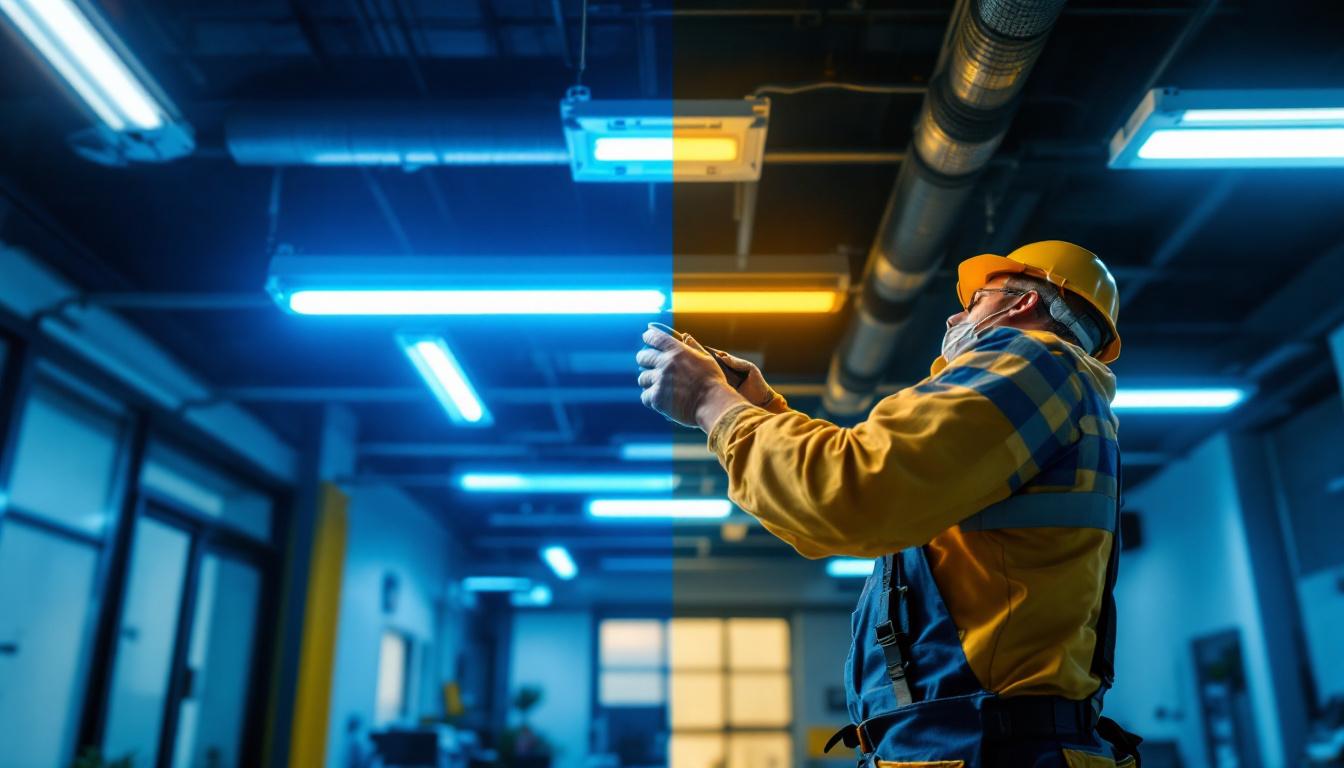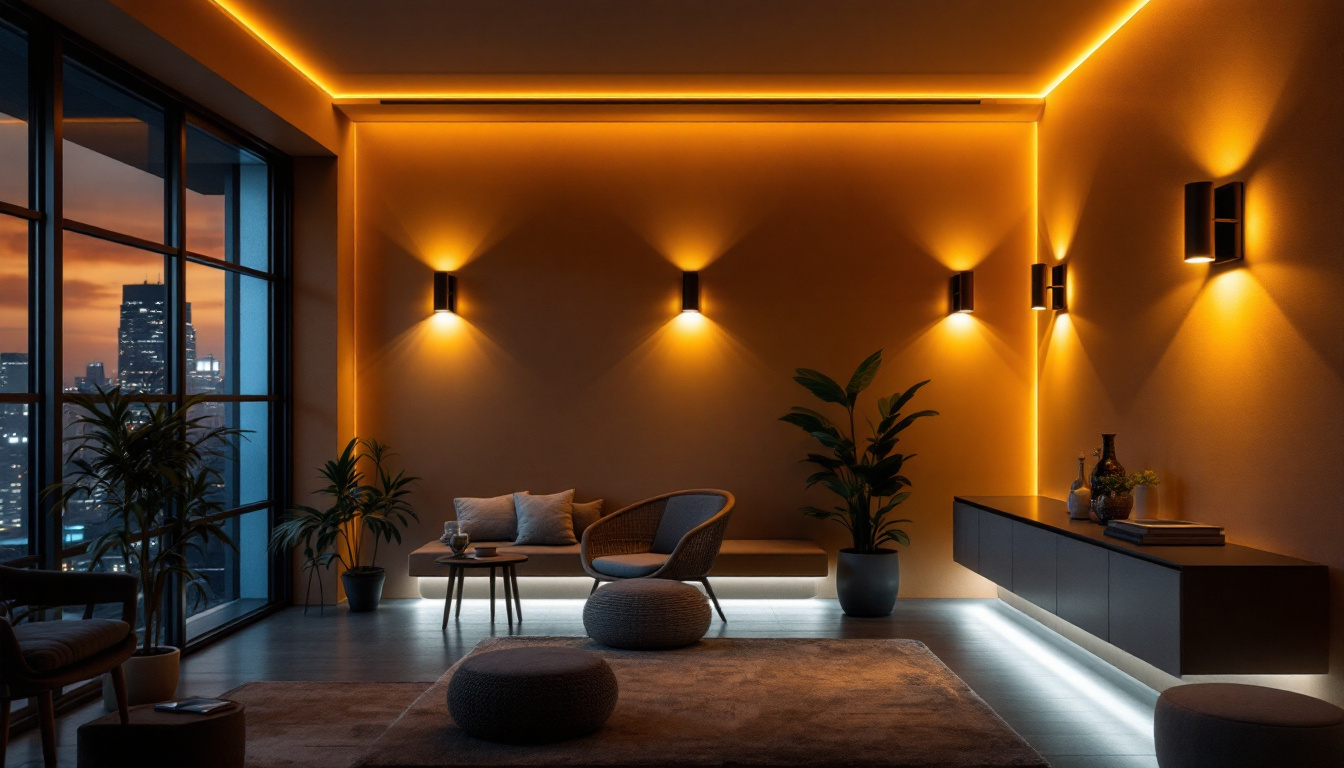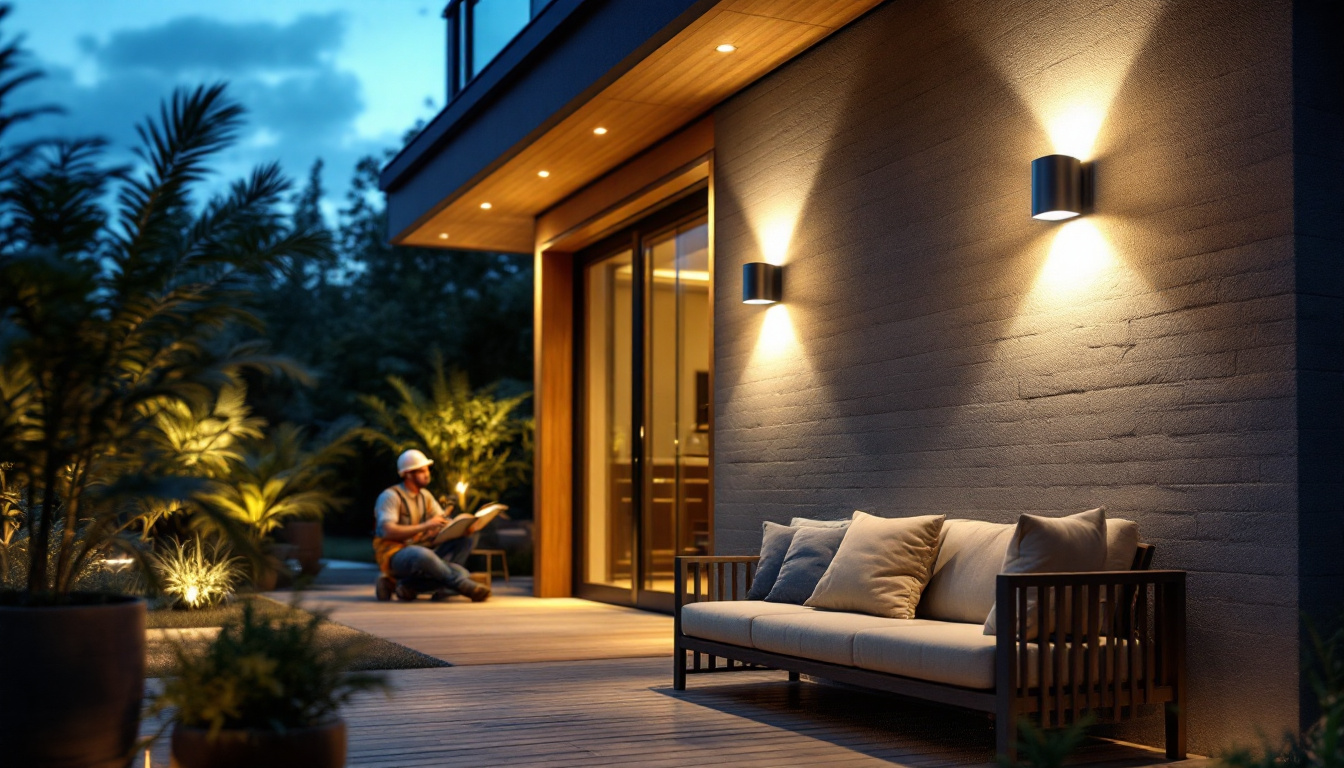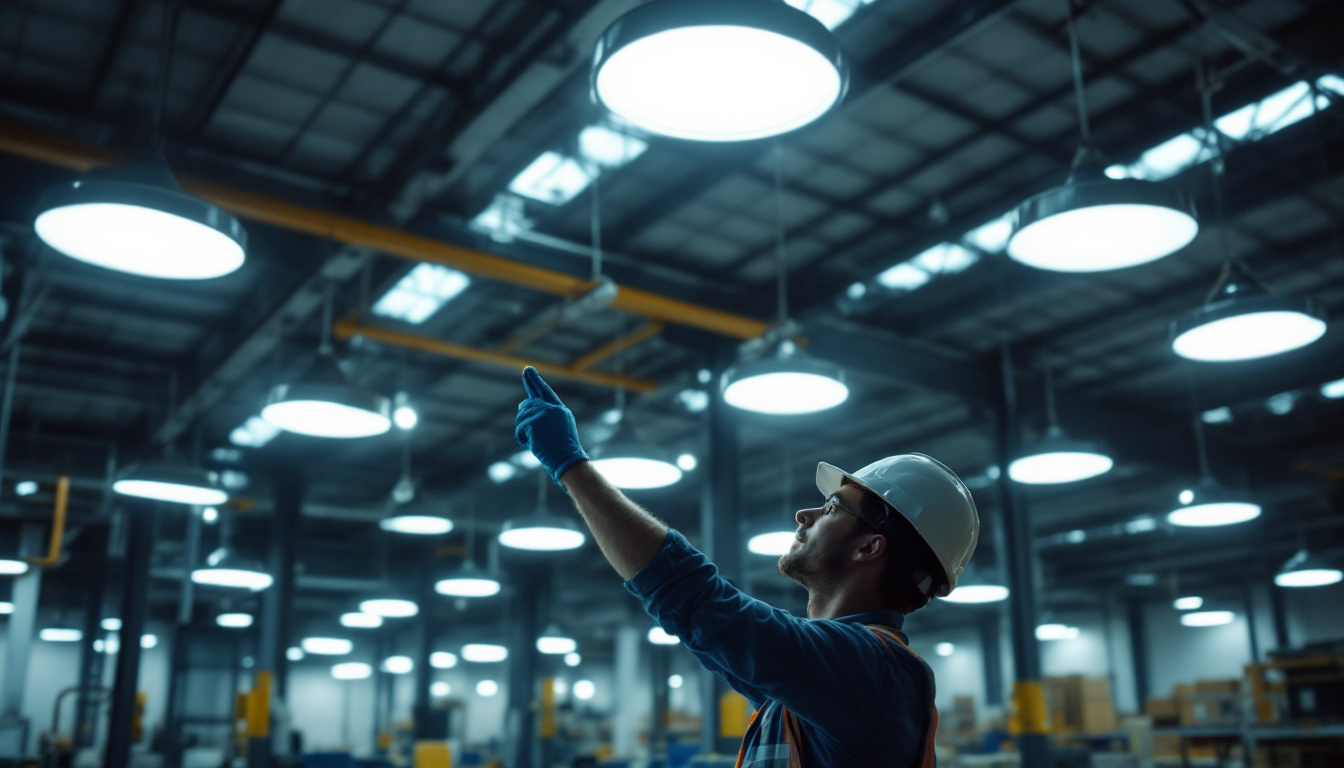
In the ever-evolving landscape of warehouse operations, effective lighting solutions have become a crucial aspect of enhancing productivity and safety. As lighting contractors, understanding the intricacies of warehouse LED lighting can significantly impact project outcomes and client satisfaction. This article delves into the essential points that lighting contractors should consider when working with LED lighting systems in warehouse environments.
LED lighting has transformed the way warehouses are illuminated. Unlike traditional lighting systems, LEDs offer a range of benefits that make them particularly suitable for large, open spaces. From energy efficiency to longevity, the advantages are compelling.
One of the most significant benefits of LED lighting is its energy efficiency. LED lights consume significantly less power than incandescent or fluorescent lights, which translates to lower energy bills for warehouse operators. This efficiency is particularly beneficial in environments where lighting is required for extended hours.
Moreover, many warehouses are now seeking to reduce their carbon footprints. By opting for LED lighting, contractors can help clients meet sustainability goals while also taking advantage of potential rebates and incentives offered by utility companies for energy-efficient upgrades. The switch to LED not only contributes to a greener planet but also positions warehouses as forward-thinking enterprises that prioritize environmental responsibility.
LED lights boast an impressive lifespan, often exceeding 50,000 hours of use. This longevity means that warehouses can reduce the frequency of bulb replacements, leading to lower maintenance costs and less disruption to operations. For lighting contractors, this presents an opportunity to offer clients a solution that minimizes downtime and enhances overall efficiency.
Additionally, the durability of LED fixtures makes them ideal for warehouse environments, where they may be subject to harsh conditions, including dust and temperature fluctuations. Understanding these aspects can help contractors recommend the most suitable products for their clients’ specific needs. Furthermore, the reduced heat output of LEDs can also contribute to a more comfortable working environment, as it lessens the load on cooling systems, ultimately leading to additional energy savings.
Another noteworthy advantage of LED lighting is its ability to provide better quality illumination. With options for adjustable color temperatures, warehouses can select lighting that enhances visibility and improves safety. This is particularly important in areas where precision is key, such as packing and sorting zones. By ensuring that employees have adequate lighting, warehouses can reduce the risk of accidents and improve overall productivity. As technology advances, the integration of smart lighting systems that allow for automated adjustments based on occupancy or natural light levels further elevates the benefits of LED solutions in warehouse settings.
When designing a lighting system for a warehouse, several factors must be taken into account to ensure optimal performance and safety. Each warehouse is unique, and lighting contractors should tailor their designs accordingly.
The layout of the warehouse plays a critical role in determining the lighting design. Factors such as racking systems, storage areas, and workflow patterns must be considered to create an effective lighting distribution plan. A well-thought-out layout will minimize shadows and ensure that all areas are adequately illuminated.
Using photometric analysis tools can help contractors visualize how light will distribute throughout the space. This analysis can identify potential issues and allow for adjustments before installation, ensuring that the final result meets both safety and operational standards.
Different areas of a warehouse may require varying levels of illumination. For example, picking and packing zones may need brighter lighting compared to storage areas. Familiarity with industry standards, such as those set by the Illuminating Engineering Society (IES), can guide contractors in determining the appropriate lighting levels for each zone.
Additionally, understanding the specific tasks performed in each area can help in selecting the right type of fixtures. For instance, high-bay LED lights may be ideal for tall storage areas, while task lighting could be beneficial in areas where detailed work is performed.
The market for LED fixtures is diverse, and selecting the right products is essential for achieving optimal performance. Contractors must consider several factors when choosing fixtures for warehouse applications.
There are various types of LED fixtures available, each suited for different applications. High-bay LED lights are commonly used in warehouses with high ceilings, providing powerful illumination over large areas. On the other hand, low-bay fixtures are ideal for spaces with lower ceilings, ensuring that light reaches the work surfaces effectively.
Additionally, task lighting can be integrated into specific workstations to enhance visibility where detailed tasks are performed. Understanding the specific needs of the warehouse will guide contractors in selecting the most appropriate fixtures for the job.
Color temperature is another critical factor in lighting design. Measured in Kelvin (K), the color temperature can influence the mood and functionality of a workspace. Cooler color temperatures (5000K and above) are often preferred in warehouses as they mimic daylight, enhancing visibility and alertness among workers.
Moreover, the quality of light, including factors such as color rendering index (CRI), should not be overlooked. A higher CRI means that colors appear more vibrant and true to life, which can be particularly important in areas where color differentiation is necessary for tasks.
As technology advances, the integration of smart lighting solutions into warehouse environments is becoming increasingly popular. Lighting contractors should be aware of these trends and consider how they can enhance their offerings.
Smart lighting systems allow for greater control and flexibility in managing warehouse lighting. Features such as motion sensors, dimming capabilities, and remote control can help optimize energy usage and improve overall efficiency. For instance, motion sensors can automatically turn lights on or off based on occupancy, reducing energy waste in unoccupied areas.
Additionally, smart lighting can provide valuable data analytics, allowing warehouse managers to monitor usage patterns and make informed decisions about energy consumption and lighting needs. This data can also assist in future planning and upgrades, making it a valuable asset for any warehouse operation.
When introducing smart lighting technologies, compatibility with existing systems is a critical consideration. Contractors should assess the current infrastructure to determine how new solutions can be integrated seamlessly. This may involve retrofitting existing fixtures or implementing new control systems that work alongside current operations.
By ensuring compatibility, contractors can help clients transition smoothly to more advanced lighting solutions without significant disruptions to their operations.
While the initial investment in LED lighting may be higher than traditional lighting systems, the long-term savings and benefits often outweigh these costs. Lighting contractors should be prepared to discuss the financial implications with clients.
When evaluating the cost of LED lighting, it is essential to consider both the upfront investment and the potential long-term savings. LEDs typically have a higher purchase price compared to traditional bulbs, but their energy efficiency and longevity lead to significant savings over time.
Contractors can help clients calculate the return on investment (ROI) by considering factors such as reduced energy bills, lower maintenance costs, and potential rebates. This financial perspective can be a compelling selling point when discussing the benefits of LED lighting with clients.
Many clients may be hesitant to invest in a new lighting system due to budget constraints. Lighting contractors can assist by providing information on financing options and available incentives. Various programs may offer rebates or tax credits for energy-efficient upgrades, making the transition to LED lighting more financially viable.
By being knowledgeable about these options, contractors can position themselves as valuable partners in the decision-making process, helping clients navigate the financial landscape of lighting upgrades.
Compliance with local regulations and safety standards is paramount in any lighting project. Lighting contractors must be aware of the relevant codes and standards that govern warehouse lighting installations.
Each region may have specific codes that dictate lighting levels, energy efficiency requirements, and safety measures. Familiarity with these codes ensures that contractors design and install lighting systems that meet all legal requirements, thereby avoiding potential fines or rework.
Additionally, staying updated on changes in regulations can help contractors provide the most current and compliant solutions to their clients, reinforcing their expertise in the field.
Safety is a critical concern in warehouse environments, and lighting plays a significant role in ensuring a safe working atmosphere. Adequate illumination can help prevent accidents and injuries, making it essential for contractors to prioritize safety in their designs.
Lighting contractors should consider implementing features such as emergency lighting and exit signs to enhance safety measures. Understanding the specific safety needs of the warehouse and its operations will allow for a more comprehensive lighting design that promotes a secure working environment.
Warehouse LED lighting presents a myriad of opportunities for lighting contractors to enhance their offerings and provide significant value to clients. By understanding the unique requirements of warehouse environments, selecting the appropriate fixtures, and integrating smart technologies, contractors can create efficient, effective, and compliant lighting solutions.
As the demand for energy-efficient and sustainable lighting continues to grow, contractors who stay informed about the latest trends, technologies, and regulations will be well-positioned to succeed in this competitive landscape. Ultimately, the goal is to deliver lighting solutions that not only meet the needs of the warehouse but also contribute to a safer and more productive working environment.
Ready to elevate your warehouse lighting projects with the best in LED technology? At LumenWholesale, we provide lighting contractors with spec-grade lighting products that combine quality and affordability. Our extensive selection is designed to meet the highest industry standards, ensuring you deliver reliable and high-performance lighting solutions. With unbeatable wholesale prices and the convenience of free shipping on bulk orders, you can trust LumenWholesale to light up your projects without the burden of hidden fees or inflated markups. Take the next step towards a brighter, more efficient workspace and explore our wholesale lighting options at the best value today.

Discover the transformative impact of converting T12 fluorescent lights to LED on lighting contractors’ projects.

Discover the essentials of LED wall lighting with our comprehensive guide tailored for lighting contractors.

Discover how LED outside wall lights are revolutionizing the lighting industry, offering contractors innovative solutions for energy efficiency, design flexibility, and enhanced outdoor aesthetics.

Discover the top high bay LED lights with our comprehensive checklist tailored for lighting contractors.